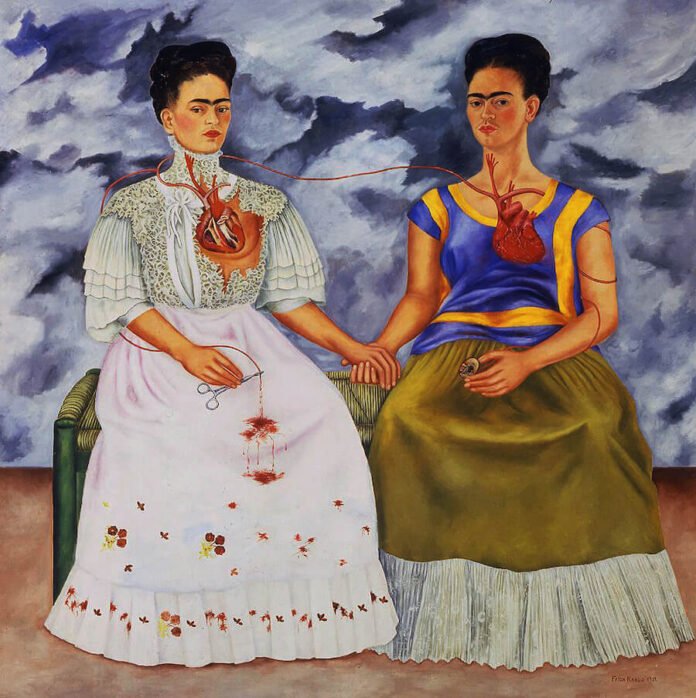Traditional Mexican Art is a kaleidoscope of color, spirituality, and deep-rooted tradition—an immersive journey from the time of the Olmecs and Aztecs to colonial influences and modern folk revivals. Whether it’s a mesmerizing Huichol bead mosaic, a fantastical alebrije, or a delicate cut-paper papel picado, each form is a living testament to community, ritual, and identity.
What connects these diverse art forms? It’s a shared story of vibrancy, symbolism, and craftsmanship, passed down through generations and rekindled in global art circles today.
1. Origins: Mexico’s Ancient Art Lineage
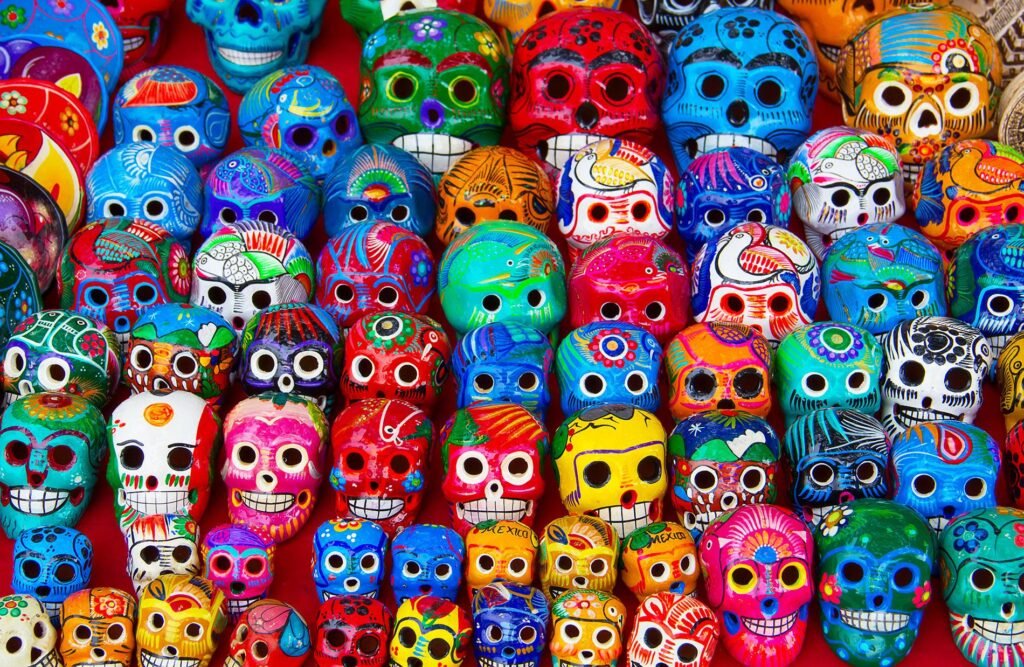
Art in Mexico stretches back to the Mesoamerican world, spanning Olmec, Maya, Teotihuacán, and Aztec greatness. These early civilizations produced monumental stone sculptures, temple murals, and ritual pottery—an art system where Elites, religion, and community life intertwined. With the Spanish colonization, European techniques blended with indigenous styles, birthing a unique fusion displayed in colonial churches and later folk traditions .
2. Artesanía—Where Craft Meets Community

In Mexico, artesanía encompasses the grassroots tradition of handmade crafts—vessels both practical and ceremonial. From masks and toys to home décor and religious objects, each item carries personal and communal meaning en.wikipedia.org. Today around 8% of Mexico’s population earn their livelihood through artesanía .
3. Talavera Pottery & Barro Negro: Clay’s Rich Legacy
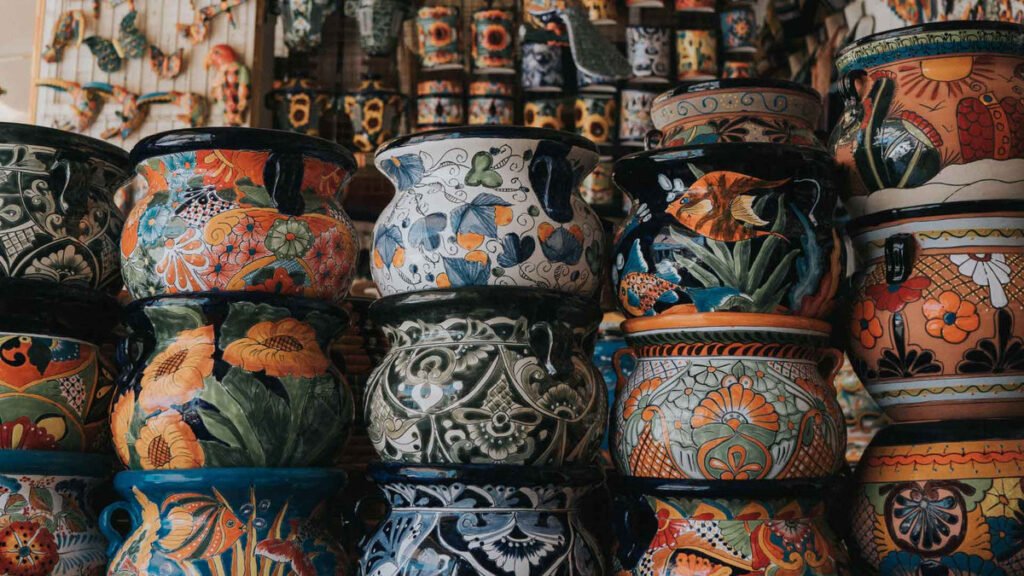
- Talavera pottery from Puebla dates back to colonial times—white and blue glazed ceramics that rival Delftware
- Barro negro (black clay pottery) from Oaxaca transforms local clay into burnished, dark sculptures. The innovative polishing technique was introduced in the 1950s, giving a metallic sheen to utilitarian and artistic pieces en.wikipedia.org.
4. Alebrijes: Whimsical Beasts of Imagination
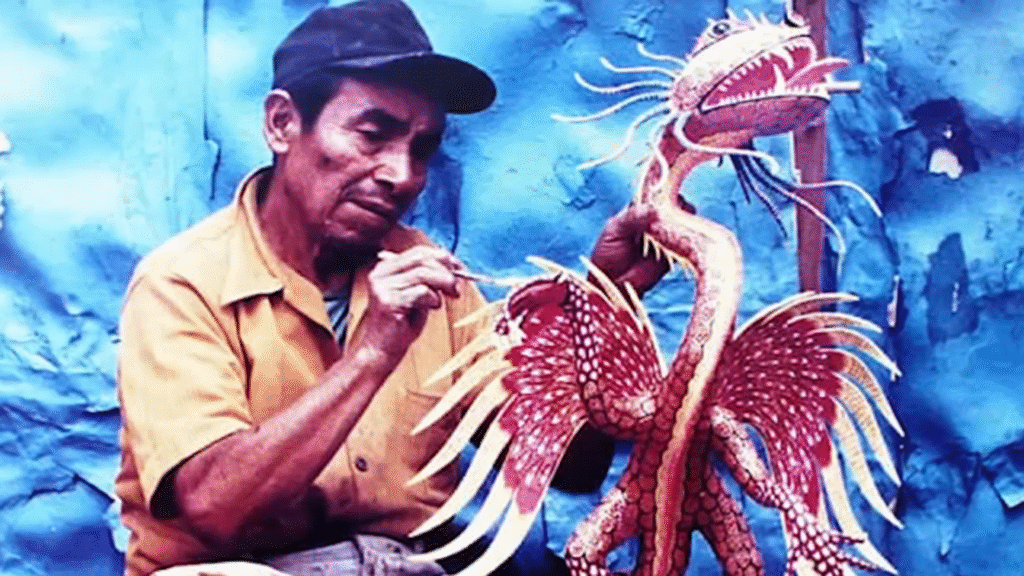
Born in the 1930s from papier-mâché artist Pedro Linares, alebrijes are vividly colored fantasy creatures. From Mexico City to Oaxaca, these dreamlike, composite beasts have carved a place in Mexico’s folk art guardianship. One Mayan artisan explains:
5. Huichol Beadwork & Yarn Art

Indigenous to Nayarit, the Huichol (Wixarika) people create intricate bead and yarn mosaics depicting sacred visions and gods. Bright animal forms and spiritual symbols mirror their theology .
6. Árbol de la Vida: Clay “Trees of Life”
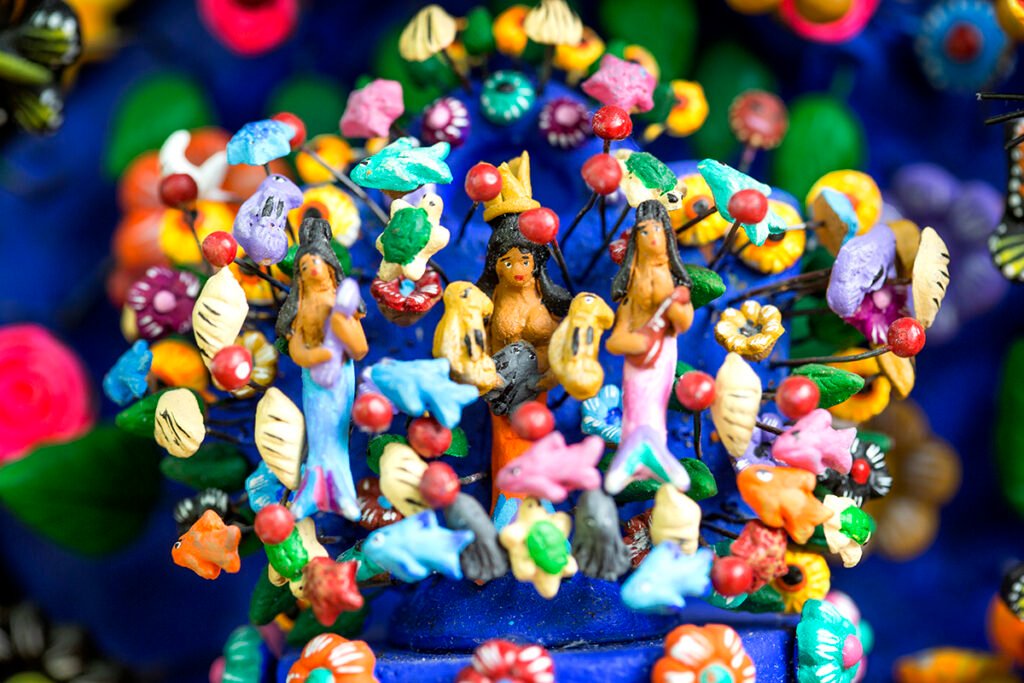
From Metepec in Estado de México, these Trees of Life are clay candelabra-like sculptures ornamental and symbolic, narrating creation myths, folklore, and family stories.
7. Cartonería & Papel Picado: Paper that Speaks
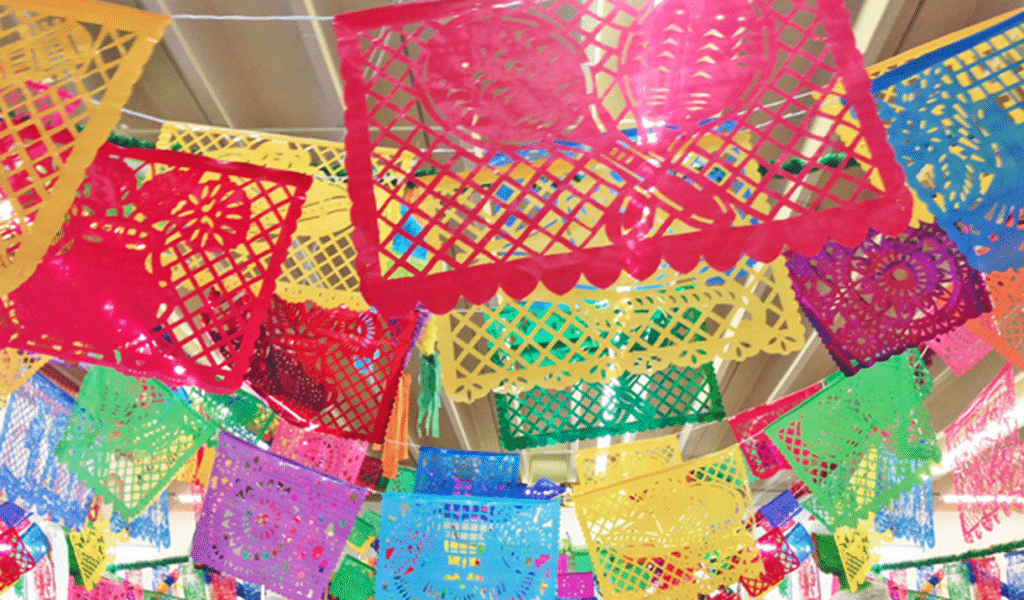
- Cartonería (papier-mâché)—produced near holy times like Easter, Day of the Dead—yields items like Judas effigies, puppets, piñatas, and decorative skulls.
- Papel picado, the beloved cut-paper banners, adorn festivals, weddings, altars—they translate celebration into fluttering art en.wikipedia.org.
8. Piteado: Stitching on Leather
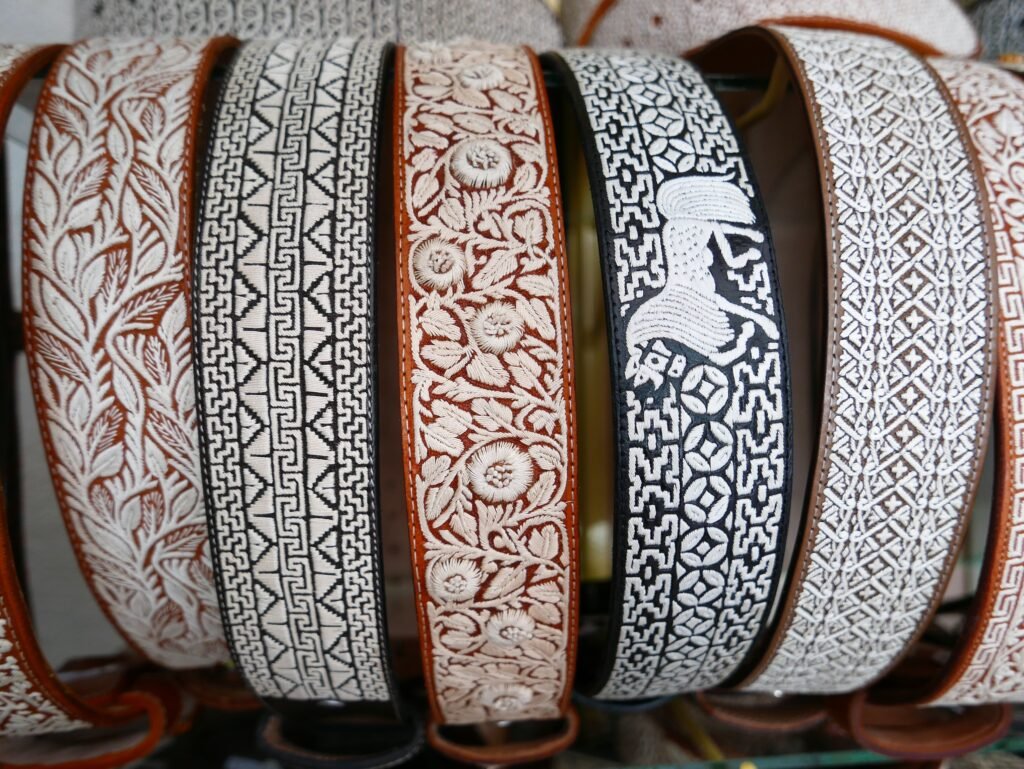
In Colotlán, Jalisco, artisans embroider century plant fiber onto leather belts, saddles, and sandals. Known for floral and pre-Hispanic motifs, piteado combines drawing, embroidery, and toolwor.
9. Olinalá Lacquerware Fine Fragrant Windows
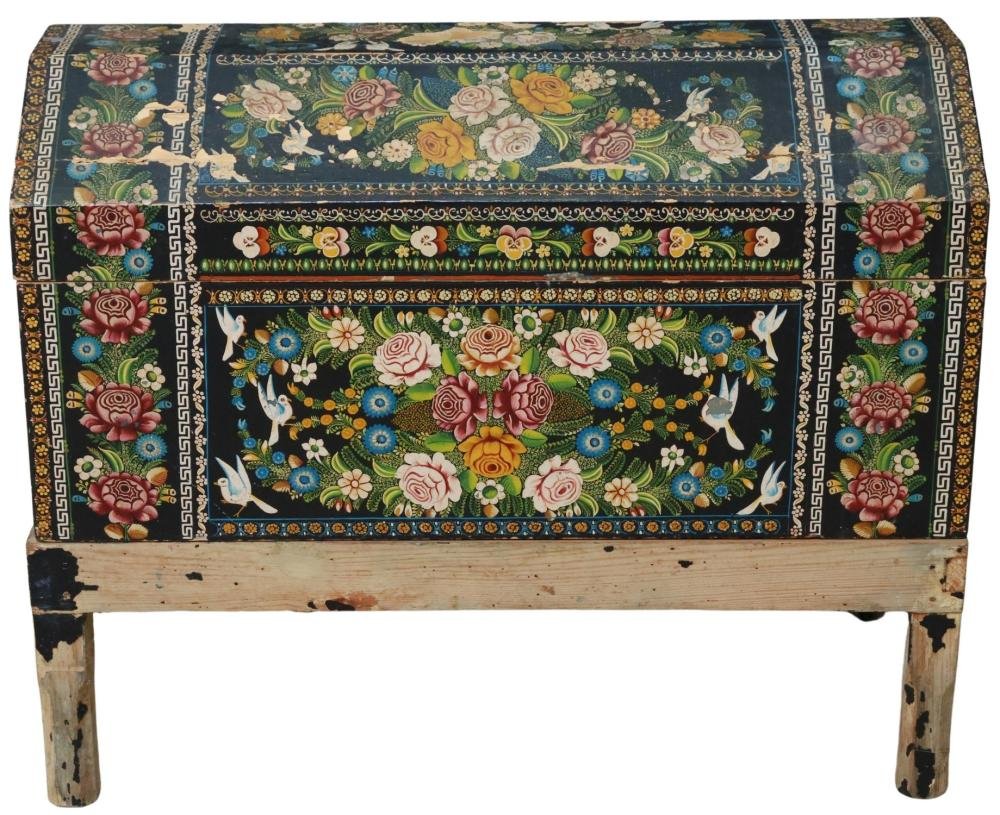
In Guerrero’s Olinalá, Nàhuatl artisans lacquer aromatic linaloe wood with multiple layers and traditional pigments—a craft registered under Mexican Designation of Origin since 1994 en.wikipedia.org.
10. Festivals & Global Workshops
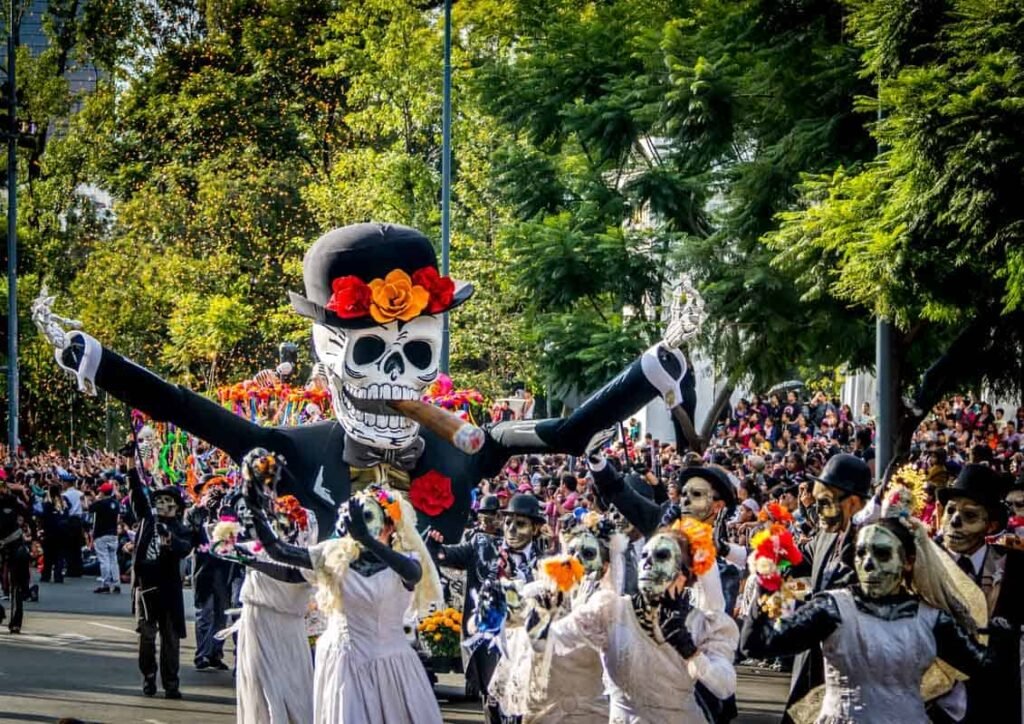
Mexican art inspires international workshops—like creating Lele dolls by indigenous artists from Querétaro at Laredo’s festival. Exhibitions like Oaxaca’s Guelaguetza bring crafts to the world stage .
🎯 Why Traditional Mexican Art Still Matters
- Deep Community Roots — skills passed through families and villages
- Symbolic Value — spiritual beings, gods, and universal themes
- Sustainability & Local Resources — clay, wood, fibers sourced locally
- Revival & Innovation — artisans adapt to tourism, design demands
- Global Influence — vibrant Mexican craft in contemporary fashion and decor, from Vogue-featured collections en.wikipedia.org
🔗 Related Blogs You Might Enjoy
- Kutch’s Rogan Art: The 400‑Year‑Old Cloth Painting Tradition
- Alebrijes & Oaxaca’s Hidden Craft Villages
- Portuguese Talavera & Global Pottery Traditions
✍️ Conclusion: Art That Speaks Across Borders
From the sacred visions of Huichol beadwork to the jubilant flutter of papel picado, Mexican Art is living, breathing, colorful, and spiritual. Rooted in ancient origins, shaped by colonial exchange, and thriving through modern innovation, it remains an essential part of Mexico’s identity—and a universal celebration of craft, color, and meaning.
Next time you pass by an alebrije in your living room, a Talavera tile in your kitchen, or string papel picado on festive days—remember you’re connecting to centuries of storytelling, devotion, and creative courage.
Let me know if you’d like this post formatted with WordPress blocks, proper alt texts, or even guidance on image SEO to enhance your blog!
